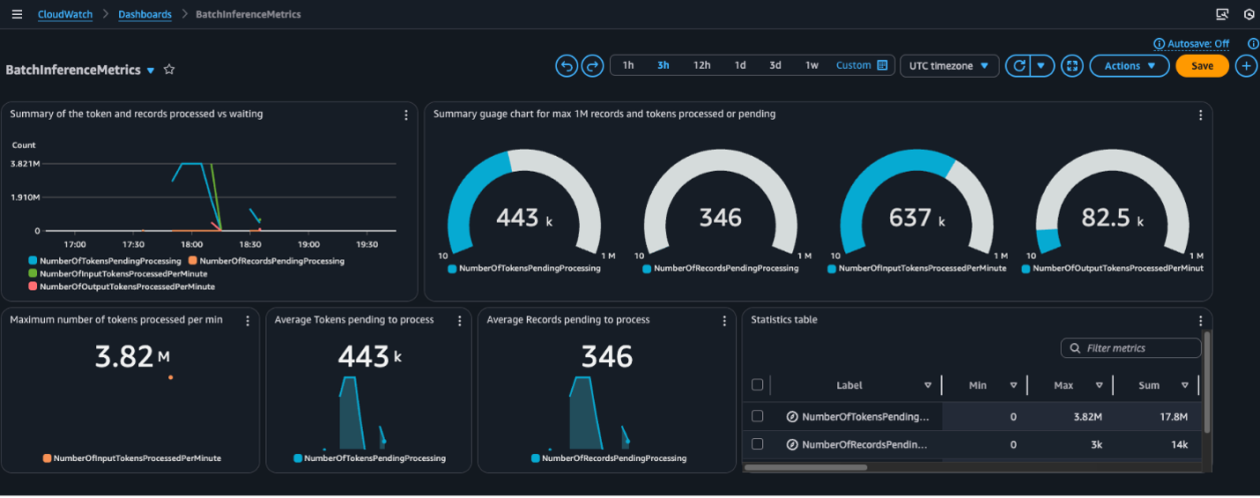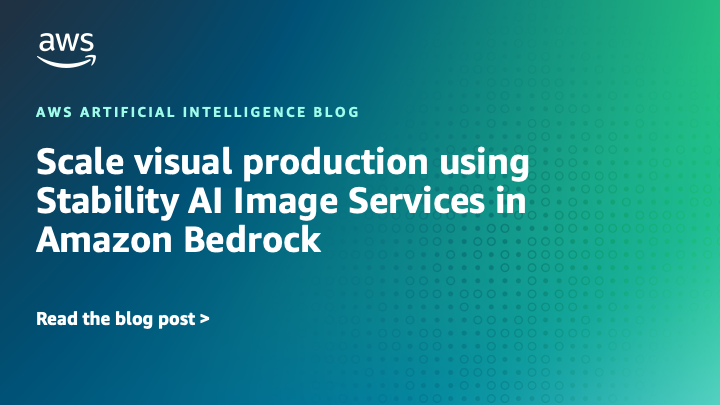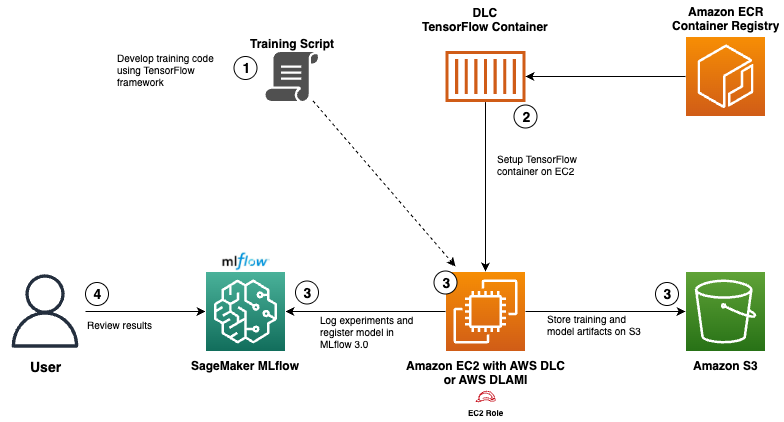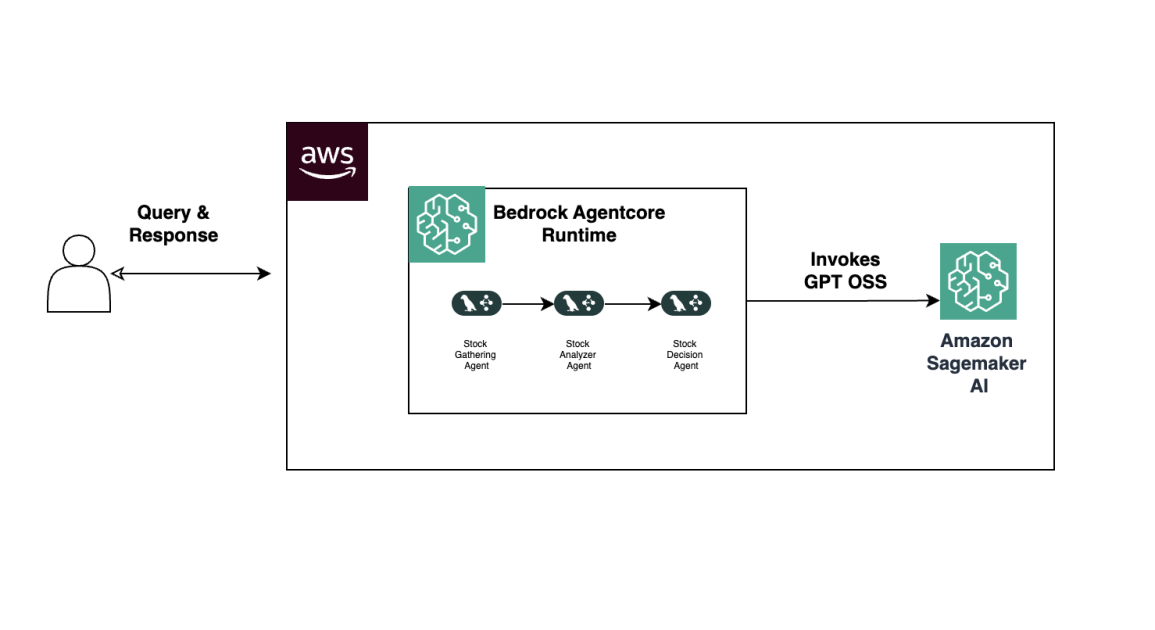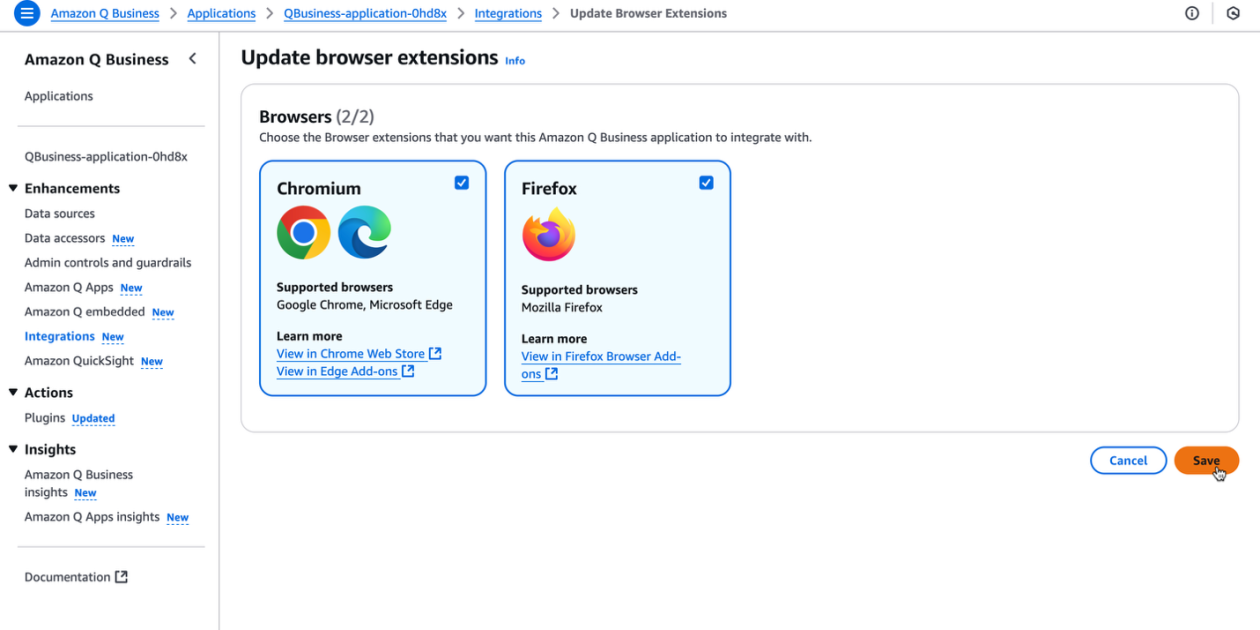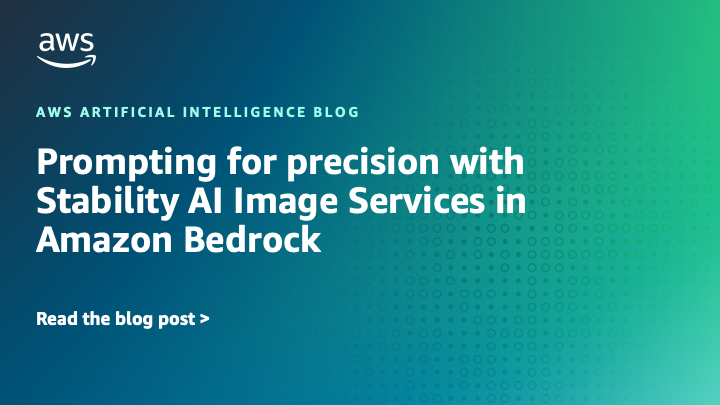
Prompting for precision with Stability AI Image Services in Amazon Bedrock
Sources: https://aws.amazon.com/blogs/machine-learning/prompting-for-precision-with-stability-ai-image-services-in-amazon-bedrock, https://aws.amazon.com/blogs/machine-learning/prompting-for-precision-with-stability-ai-image-services-in-amazon-bedrock/, AWS ML Blog
TL;DR
- Amazon Bedrock now includes Stability AI Image Services, offering nine tools to improve how businesses create and modify images.
- The service extends Stable Diffusion and Stable Image models to deliver precise control over image generation and editing through structured prompting.
- It emphasizes advanced prompting techniques (modular prompting, negative prompts, and prompt weighting), style-guided prompts, and image-to-image workflows, all available via Bedrock APIs.
- Capabilities include in-painting, style transfer, recoloring, background removal, object removal, and style guides, among others, with further control through ControlNet, IP-Adapter, and clip-based captioning.
- The post shares best practices, examples, and approaches to maximize output quality for enterprise uses like product photography, concept visuals, and marketing campaigns. AWS ML Blog
Context and background
The AWS Machine Learning blog announces that Stability AI Image Services are now available as APIs within Amazon Bedrock. These services expand the capabilities of Stability AI’s image models, enabling enterprises to achieve fine-grained control over both image creation and editing. The discussion builds on prior coverage of prompt engineering on AWS, notably the post Understanding prompt engineering: Unlock the creative potential of Stability AI models on AWS, and expands on how advanced prompting techniques can maximize image generation quality and precision for enterprise applications. The overarching goal is to provide more deterministic, brand-consistent visuals for professional needs across product photography, concept visuals, and marketing campaigns. AWS ML Blog
What’s new
- Introduction of Stability AI Image Services as part of Amazon Bedrock, delivering nine image tools to shape and edit visuals with greater precision.
- Extension of Stable Diffusion and Stable Image models to support granular control over prompts and outputs.
- Emphasis on clear prompts as art direction and the exploitation of strong prompts to control tone, texture, lighting, and composition.
- Availability of APIs for capabilities such as in-painting, style transfer, recoloring, background removal, object removal, and style guidance.
- Structured prompt practices: three primary formats for prompt phrasing, modular prompting to separate elements for debugging and precision, and the use of negative prompts to remove unwanted elements.
- Introduction of prompt weighting syntax to prioritize specific components (e.g., character vs. background) and to modulate influence through weights like 1.8 or 1.1, using (:) or the shorthand (()).
- Techniques for style matching and reference-driven prompting, including the use of style tags and references to established visual genres or named artists.
- Image-to-image workflows that leverage a control image (control image) to guide outputs, with options like Structure, Sketch, and Style, and with supporting control tools (ControlNet, IP-Adapter, clip-based captioning) that enable further control when paired with Stability AI models. AWS ML Blog
Why it matters (impact for developers/enterprises)
For developers and enterprises, Stability AI Image Services in Bedrock provide precise, repeatable control over visual outputs at scale. Clear, structured prompts help ensure brand-consistent visuals across product photography, concept images, and marketing campaigns. The combination of modular prompting, negative prompts, and prompt weights reduces ambiguity, enabling more predictable results and faster iteration cycles. Image-to-image workflows, together with reference-driven prompting and style matching, empower teams to translate existing visuals—lookbooks, campaigns, and style guides—into new assets with fidelity. When integrated via Bedrock APIs, these capabilities support large-scale production pipelines while maintaining the flexibility needed for creative experimentation. AWS ML Blog
Technical details or Implementation
Prompt structure and formats
To maximize granular capabilities, practitioners are encouraged to construct well-structured prompts that enable fine-grained control. The approach emphasizes that prompt structure affects results and that more structured prompts typically yield more consistent and controllable outcomes. Three primary prompt formats offer different levels of control and readability, with each format suiting different interfaces and goals. While the article does not spell out the exact formats in this excerpt, it highlights that selecting the right format helps the model understand intent and reach the desired outcome. AWS ML Blog
Modular prompting
Modular prompting divides prompts into distinct components, each specifying what to draw and how it should appear. Benefits include preventing conflicting instructions, enabling precise output, and simplifying debugging. By isolating elements, you can quickly identify effective or ineffective parts of prompts, leading to more refined outputs. Example prompts illustrate how modular order can influence visual weight (e.g., placing style before subject). AWS ML Blog
Negative prompts and prompt weighting
Negative prompts guide the model away from undesired elements, acting like a retoucher’s checklist to improve professional quality. A well-structured negative prompt can enhance photorealism and reduce distractions. The article provides concrete examples, including a negative prompt such as: “No weird hands. No blurry corners. No cartoon filters. Definitely no watermarks.” Weighting allows you to emphasize or deemphasize components within a prompt. Weights are expressed as (:) or the shorthand (()) and can be applied to both positive and negative terms. For instance, to emphasize a character over the background you might set character:1.8 and background:1.1. An example prompt with weights demonstrates how this technique steers the model toward the intended emphasis: editorial product photo of (a translucent gel moisturizer jar:1.4) placed on a (frosted glass pedestal:1.2), surrounded by (dewy pink flower petals:1.1), with soft (diffused lighting:1.3), subtle water droplets, shallow depth of field. A corresponding weighted negative prompt example might attenuate undesirable traits (e.g., (text:0.5), (blurry:0.2), (lowres:0.1)). AWS ML Blog
Style matching and reference-driven prompting
Effective prompts often rely on established style descriptors and references. The article discusses using style tags that align with familiar visual languages and datasets, allowing for nuanced control through combinations and weights. Named visual signatures from artists can be invoked to steer aesthetics (e.g., a depiction of a Van Gogh style:1.3). Reference images can guide pose, color palettes, or lighting in image-to-image workflows such as Structure, Sketch, and Style. ControlNet, IP-Adapter, and clip-based captioning are mentioned as available tools to enhance control when paired with Stability AI models. AWS ML Blog
Image-to-image workflows and control tools
Stability AI Image Services support image-to-image workflows by using a control image to guide the output. Workflows include Structure, Sketch, and Style, enabling more precise imitation of an input’s pose, texture, or mood. The ecosystem also includes control-enhancing tools such as ControlNet, IP-Adapter, and clip-based captioning for added control when paired with the models. These capabilities broaden the range of enterprise use cases, from product photography retouching to campaign-level image adaptation. AWS ML Blog
Getting started with the API
To get started with Stability AI Image Services in Amazon Bedrock, follow the instructions in Getting started with the API to complete the prerequisites. This article outlines best practices for building effective prompts and demonstrates how prompt structure, modular prompting, negative prompts, and weights contribute to consistent outcomes. AWS ML Blog
Key takeaways
- Stability AI Image Services are now available in Amazon Bedrock as APIs, offering nine tools for image creation and editing.
- Enterprises gain precise, prompt-driven control over visuals, supporting consistent branding across campaigns.
- Techniques such as modular prompting, negative prompts, and prompt weighting enable fine-grained influence over outputs.
- Style-driven prompting, reference images, and image-to-image workflows unlock advanced capabilities for product photography and marketing visuals.
- Control tools like ControlNet, IP-Adapter, and clip-based captioning expand how models can be guided in production pipelines. AWS ML Blog
FAQ
-
What is Stability AI Image Services in Bedrock?
They are a set of image-generation and editing tools available as APIs in Amazon Bedrock that extend Stability AI models for enterprise use. [AWS ML Blog](https://aws.amazon.com/blogs/machine-learning/prompting-for-precision-with-stability-ai-image-services-in-amazon-bedrock/)
-
What prompting techniques are emphasized?
The article highlights modular prompting, negative prompts, and prompt weighting to achieve precise outputs and easier debugging. [AWS ML Blog](https://aws.amazon.com/blogs/machine-learning/prompting-for-precision-with-stability-ai-image-services-in-amazon-bedrock/)
-
What image-to-image workflows are mentioned?
Workflows such as Structure, Sketch, and Style are supported, with reference images guiding outputs and control tools available for added control. [AWS ML Blog](https://aws.amazon.com/blogs/machine-learning/prompting-for-precision-with-stability-ai-image-services-in-amazon-bedrock/)
-
How do style tags and artist references help?
Style tags and artist references provide anchors in prompts to steer visuals toward recognizable aesthetics and brand-compatible looks. [AWS ML Blog](https://aws.amazon.com/blogs/machine-learning/prompting-for-precision-with-stability-ai-image-services-in-amazon-bedrock/)
References
More news
Move AI agents from proof of concept to production with Amazon Bedrock AgentCore
A detailed look at how Amazon Bedrock AgentCore helps transition agent-based AI applications from experimental proof of concept to enterprise-grade production systems, preserving security, memory, observability, and scalable tool management.
Monitor Amazon Bedrock batch inference using Amazon CloudWatch metrics
Learn how to monitor and optimize Amazon Bedrock batch inference jobs with CloudWatch metrics, alarms, and dashboards to improve performance, cost efficiency, and operational oversight.
Scale visual production using Stability AI Image Services in Amazon Bedrock
Stability AI Image Services are now available in Amazon Bedrock, delivering ready-to-use media editing via the Bedrock API and expanding on Stable Diffusion models already in Bedrock.
Use AWS Deep Learning Containers with Amazon SageMaker AI managed MLflow
Explore how AWS Deep Learning Containers (DLCs) integrate with SageMaker AI managed MLflow to balance infrastructure control and robust ML governance. A TensorFlow abalone age prediction workflow demonstrates end-to-end tracking, model governance, and deployment traceability.
Build Agentic Workflows with OpenAI GPT OSS on SageMaker AI and Bedrock AgentCore
An end-to-end look at deploying OpenAI GPT OSS models on SageMaker AI and Bedrock AgentCore to power a multi-agent stock analyzer with LangGraph, including 4-bit MXFP4 quantization, serverless orchestration, and scalable inference.
Supercharge your organization’s productivity with the Amazon Q Business browser extension
The Amazon Q Business browser extension brings context-aware, AI-driven assistance to your browser for Lite and Pro subscribers, enabling rapid, source-backed insights and seamless workflows.

